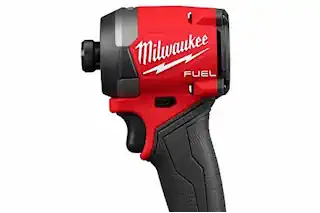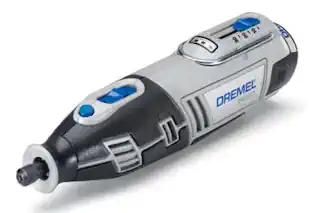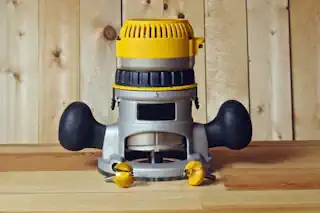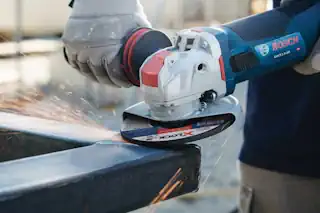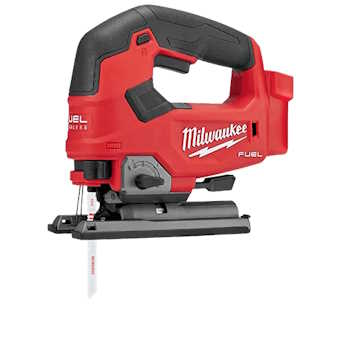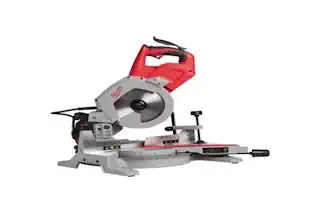The DIY Guide to Mastering Your Reciprocating Saw
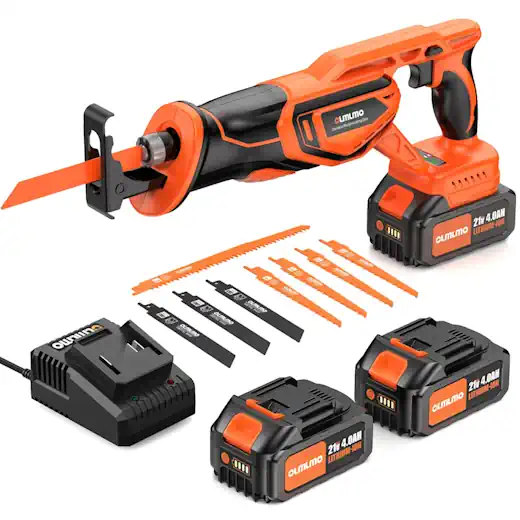
If you’ve just unboxed a reciprocating saw or it’s been sitting at the back of your tool shed, underappreciated, it’s about time you get acquainted with your power-packed DIY friend. Also known as a recip saw or Sawzall (a generic term created by the Milwaukee Tool Company), this versatile tool is not just for seasoned pros but also serves as an unmatched asset to the enthusiastic home improver. This comprehensive guide will have you handling your reciprocating saw with the expertise it deserves, turning you into a cutting wizard in no time!
Introduction to Reciprocating Saws
Like every great tool in your arsenal, understanding the reciprocating saw’s origin and its many variations is crucial to maximizing its potential. This section gives you a peek into how the reciprocating saw or Saws All came to be and how it’s come a long way from its industrial roots to become a staple in home tool kits.
The Evolution of Power and Precision
Back in 1951, when Milwaukee invented the first reciprocating saw, it was an answer to the need for a more versatile cutting tool in construction and demolition sites. This single invention brought a level of power and precision that was previously unimaginable. Since then, reciprocating saws have become increasingly ergonomic, powerful, and equipped with features that make them adaptable to various uses.
The Many Faces of Reciprocating Saws
There’s a reciprocating saw for every need, from the corded powerhouses that won’t quit to the lightweight and maneuverable cordless models that offer better portability. Whether you’re cutting branches in your garden, pipes under the sink, or even shaping metal for a DIY art project, there’s a reciprocating saw designed just for you.
The Basics: Understanding Your Reciprocating Saw
Before you start slicing through anything, a proper grasp of your tool is the way to go. Here, we’ll dissect the anatomy of a reciprocating saw and explore essential safety measures.
Parts and Functions Demystified
You can’t run if you don’t know how to walk, and the same goes for reciprocating saws. Understanding the essential components, from the blade to the shoe, and how their interplay governs the saw’s performance is vital knowledge.
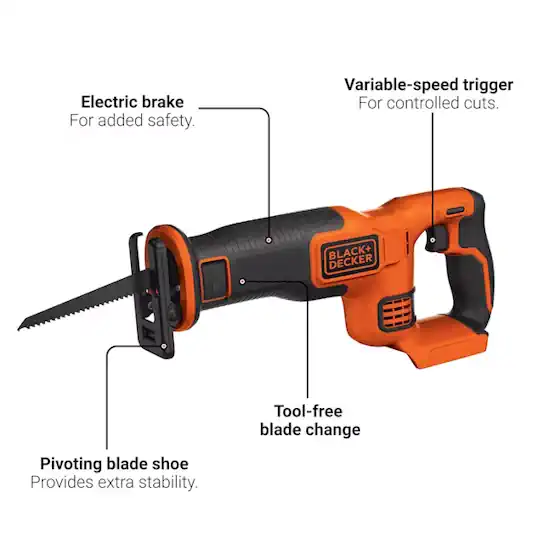
Essential Components of a Reciprocating Saw and Their Roles
Blade: The heart of the saw, the blade determines the type of material you can cut through. There are blades specialized for wood, metal, and even masonry. Changing the blade to suit your material ensures a smooth and efficient cut.
Motor: This is where your saw gets its power. Corded models often have more sustained power output, whereas cordless models offer the freedom to move around easily.
Trigger: Operating much like a gun trigger, this is what you squeeze to bring your saw to life. The pressure applied can often control the speed of the cut, offering precision in delicate situations. A variable speed trigger is the key to increased control.
Shoe: The metal plate at the base of the blade acts as a pivot point for the saw. It stabilizes the saw against the work surface, allowing for better control and more accurate cuts.
Battery (for cordless models): The source of power for cordless reciprocating saws, battery capacity can greatly affect how long you can work. It’s always a good idea to have a spare fully charged battery on hand for larger projects.
Safety Lock: An essential safety feature, this prevents the saw from being accidentally started. Always make sure the safety lock is engaged when the saw is not in use.
Remember, knowing your tool inside and out not only ensures a job well done but also keeps you safe while doing it. With this knowledge in hand, you’re ready to explore the vast capabilities of your reciprocating saw.
Safety First: Guidelines for Smart Operation
Reciprocating saws are extremely powerful and should be handled with care. We’ll cover fundamental safety tips like wearing the right protective gear, keeping your workspace clean and organized, and knowing when to call in the professionals for trickier jobs.
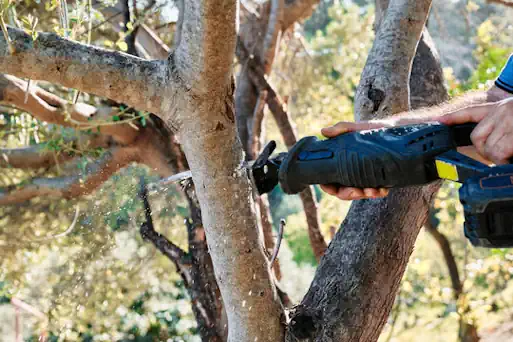
Top 10 Safety Tips for Using a Reciprocating Saw
Wear Proper Protective Gear: Always wear safety goggles, gloves, and ear protection to guard against flying debris, sharp edges, and loud noises.
Inspect Equipment Before Use: Check the saw, especially the blade and cord (if using a corded model), for damage or wear before starting your project. Adjust and trouble spots before you operate the saw.
Secure Your Work Piece: Make sure the material you’re cutting is firmly clamped or otherwise secured to prevent slipping.
Maintain a Firm Grip and Stance: Hold the saw with both hands and keep your feet planted firmly on the ground to ensure stability while cutting.
Be Aware of What’s Behind Your Cut: Always consider and check what’s on the other side of the material to avoid accidentally cutting into pipes, wires, or causing other damage.
Use the Right Blade for the Material: Select a blade specifically designed for the material you are cutting to increase efficiency and prevent blade damage.
Avoid Blade Binding: Make sure the blade is not forced or twisted during a cut to prevent kickback, which can lead to loss of control.
Keep Blades Sharp: Replace or sharpen blades regularly to maintain optimal cutting performance and reduce strain on the motor.
Use the Safety Lock: Always engage the safety lock when the saw is not in operation to prevent accidental starts.
Stay Focused and Avoid Distractions: Keep your attention on the task at hand; distractions can lead to slips or mistakes that cause injuries.
By following these essential safety tips, you can enjoy the versatility and power of your reciprocating saw while keeping yourself and those around you safe. Remember, taking a little extra time to prepare and proceed with caution can make all the difference in ensuring a successful and safe outcome for your DIY projects.
Choosing the Right Blade for the Job
The blade is the unsung hero of your reciprocating saw. Its type and condition can make or break your cutting experience.
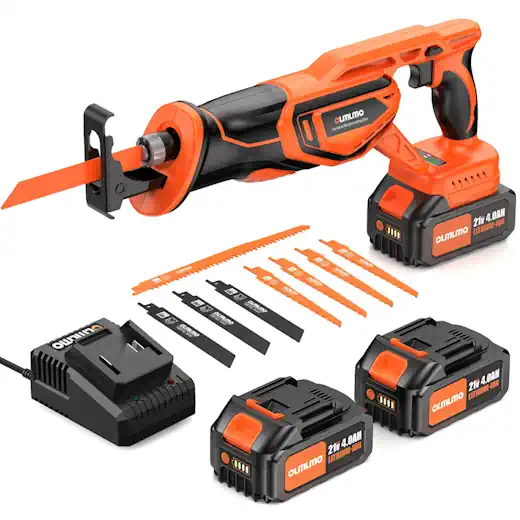
The Variety of Reciprocating Saw Blades
From wood-cutting blades that mimic chainsaws to bi-metal blades that blend the durability of steel with the flexibility of high-speed steel, there’s a dizzying array of blades available. We’ll break down the types and show you which one serves best for different cutting applications.
Matchmaking Blades to Materials
Metal cutting blades shouldn’t be anywhere near your precious oak tabletop, and a pruning blade won’t last long on copper pipes. We’ll highlight the ideal matches between blades and materials to ensure you’re always using the right tool for the job.
Using Guides and Jigs for Laser-like Accuracy
When consistent precision is non-negotiable, turn to jigs and guides that can turn your reciprocating saw into a cutting laser. Create custom tools or invest in off-the-shelf solutions that offer repeatable accuracy for your cuts. Make sure the blade fits the jig properly to avoid a jam or having the blade snap.
Maintenance and Care for Your Saw
To keep your reciprocating saw reciprocating effectively, you’ll need to show it some love. Proper maintenance ensures longevity and consistent performance.
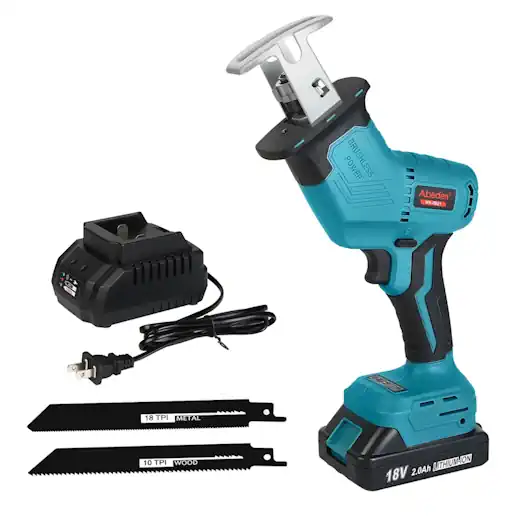
Top 5 Maintenance Steps for Your Reciprocating Saw
Maintaining your reciprocating saw is crucial for ensuring its longevity and performance. Here are the top five maintenance steps you should regularly perform:
Clean After Use: Always clear away any dust, debris, and sawdust from the saw’s body and blade after use. A clean tool is less likely to malfunction and will last longer.
Inspect and Replace Blades Regularly: A dull or damaged blade can not only make your job harder but can also pose a safety risk. Inspect blades before each use and replace them as needed to ensure clean cuts and reduce strain on the saw’s motor.
Lubricate the Moving Parts: Keep the saw’s mechanism moving smoothly by applying lubricant to the blade’s moving parts and the pivot points. This prevents rust and reduces wear on the parts.
Check the Battery and Cords (if applicable): For cordless models, regularly check the battery’s condition and ensure it is charged properly. For corded models, inspect the cords for any damage to prevent electric shocks or fire hazards.
Store Properly: When not in use, store your reciprocating saw in a dry, safe place. If possible, keep it in a case to protect it from dust and accidental damage.
By following these maintenance steps, you’ll help ensure your reciprocating saw remains a reliable and efficient tool for all your cutting needs.
Conclusion
Stepping into the world of DIY and mastering the versatile tool that is the reciprocating saw can unlock new realms of creativity and efficiency in your projects. Whether it’s through the intricate details of selecting the right blade, adhering to crucial safety practices, or discovering innovative applications, your journey with this powerhouse tool is bound to be both fulfilling and inspiring. Remember, every cut, every project, and every challenge you overcome with your reciprocating saw adds a layer to your skill-set, making you not just a better craftsman but a creator with the ability to bring visions to life. We encourage you to keep pushing the boundaries, stay curious, and most importantly, enjoy every moment of your making process.
Frequently Asked Questions (FAQ)
Can I use my reciprocating saw to cut through metal?
Yes, you can cut through metal with your reciprocating saw, but you need to ensure you’re using a blade designed specifically for metal cutting. These blades are usually made from bimetal or carbide-tipped materials to handle the toughness of metals.
How often should I replace the saw blade?
The frequency of blade replacement depends on how often you use your saw and what materials you’re cutting. Always inspect your blade before use; if you notice it’s dull or damaged, it’s time for a replacement. For heavy users, this might mean after every major project.
Is it necessary to lubricate my saw, and if so, how often?
Yes, lubrication is crucial for maintaining the smooth operation of your reciprocating saw. Apply lubricant to the moving parts and pivot points every few months or more frequently based on usage. Always refer to your saw’s manual for specific lubrication instructions.
What safety gear should I wear when using a reciprocating saw?
When operating a reciprocating saw, always wear safety glasses or goggles, hearing protection, and heavy-duty gloves. These precautions will protect you from potential hazards such as flying debris, loud noise, and vibrations.
Can reciprocating saws be used for crafting and detailed work?
Absolutely! While reciprocating saws are known for their power in demolition and heavy cutting, with the right blade and a steady hand, they can also be used for more delicate tasks. Specialty blades and using guides or jigs can help achieve precision and detail in your projects.
